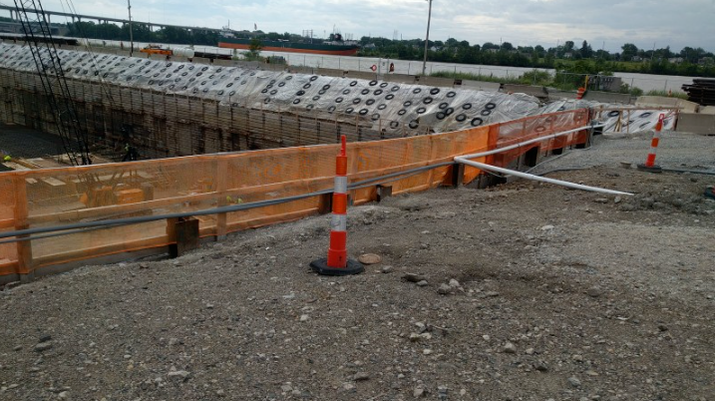Leading Consulting Civil Engineering Companies for Infrastructure Projects
Leading Consulting Civil Engineering Companies for Infrastructure Projects
Blog Article
Just How Consulting Engineers Enhance Geotechnical Design Projects: Insights Into Their Know-how, Approaches, and Collaborative Approaches
Consulting designers are crucial in enhancing geotechnical design projects, using their specialized understanding to browse the complexities of subsurface problems. Their methodologies include a series of website examination strategies, consisting of Standard Infiltration Examinations (SPT) and Cone Infiltration Examinations (CPT), which notify crucial choices throughout the layout and building and construction phases. In addition, their joint methods foster interaction among varied project stakeholders, eventually shaping the task's trajectory. As we check out the diverse roles these specialists play, it ends up being clear that their payments extend beyond technical competence, prompting a closer check out the implications for job success.
Duty of Consulting Engineers
The expertise of seeking advice from designers in geotechnical design is essential to the effective execution of construction projects. These specialists play a pivotal function in examining soil and rock buildings, which are important variables influencing style and building and construction choices. By performing extensive website investigations, getting in touch with engineers accumulate necessary information that educates the style process, ensuring projects are improved secure and appropriate ground.
Consulting engineers likewise provide vital understandings right into risk management (geotechnical geologist). They recognize possible geotechnical risks, such as landslides, dirt liquefaction, and negotiation problems, enabling stakeholders to implement efficient reduction methods. Their proficiency aids in optimizing foundation styles, which can result in substantial expense savings and enhanced safety and security
Additionally, seeking advice from engineers work as a crucial link between task owners, architects, and specialists. Their ability to equate intricate geotechnical information into actionable referrals cultivates cooperation and facilitates informed decision-making throughout the task lifecycle. This multidisciplinary strategy not just improves task performance however additionally guarantees conformity with regulative requirements and finest methods.
Secret Methods in Geotechnical Design

One primary method is website investigation, which involves performing field tests and research laboratory evaluations to collect data on subsurface conditions. Techniques such as Standard Penetration Screening (SPT) and Cone Infiltration Testing (CPT) are extensively utilized to evaluate dirt stratigraphy and strength. In addition, geophysical approaches, consisting of seismic and electric resistivity surveys, provide non-invasive methods to assess subsurface characteristics.
An additional critical methodology is mathematical modeling, which enables designers to simulate numerous situations and anticipate exactly how soil-structure interactions will behave under various loading problems. Limited Aspect Evaluation (FEA) is a typical technique utilized in this context.
In addition, the design of foundations, retaining structures, and earthworks relies heavily on these methods - geotechnical geologist. By integrating sophisticated logical tools with area data, consulting designers can create customized options that attend to certain job difficulties, inevitably adding to the security and safety of building and construction tasks
Relevance of Dirt Analysis
Dirt evaluation acts as a foundational aspect in geotechnical engineering, supplying important insights right into the physical and chemical residential or commercial properties of dirt essential for reliable building preparation. Recognizing dirt attributes is vital for establishing its load-bearing capacity, drainage habits, and possibility for settlement or instability. Comprehensive dirt investigations, including tasting and laboratory testing, assistance determine criteria such as soil kind, wetness web content, density, and shear stamina.
These evaluations notify the option of proper construction techniques and products, ultimately affecting task safety and security and durability. As an example, natural dirts might require various structure layouts compared to granular dirts, demanding customized engineering solutions. In addition, soil analysis help in identifying pollutants that could present dangers to human health or the setting, enabling the advancement of mitigation strategies.
Integrating soil evaluation into the beginning of project growth assists to minimize unforeseen challenges, Home Page ensuring that designers can anticipate and attend to possible concerns prior to they rise. By establishing a thorough understanding of the website problems, seeking advice from designers can maximize style effectiveness and reduce costs, consequently boosting the general success of geotechnical engineering jobs.
Collective Techniques in Tasks
Effective geotechnical projects often hinge on collective approaches that bring together diverse expertise from numerous disciplines. Reliable partnership amongst consulting designers, rock hounds, environmental researchers, and construction specialists is essential for addressing intricate challenges and optimizing project end results. By leveraging the distinct abilities and understanding of each employee, tasks can gain from an all natural understanding of the website conditions, regulative demands, and engineering constraints.
Regular interaction and interdisciplinary conferences assist in the sharing of insights and cultivate a culture of synergy. These collective efforts allow the recognition of prospective dangers early in the job lifecycle, allowing for prompt reduction approaches. Incorporating responses from stakeholders, consisting of local neighborhoods and governing firms, guarantees that all viewpoints are considered, boosting project approval and conformity.
In addition, the combination of sophisticated modern technologies, such as Geographic Info Solution (GIS) and Structure Information Modeling (BIM), more enhances cooperation. These tools permit for the real-time sharing of information and visualization of geotechnical problems, promoting notified decision-making. Eventually, a joint technique not just enhances task implementation but also lays the foundation for cutting-edge options to complicated geotechnical engineering challenges.
Effect On Job Results

Consulting engineers employ advanced approaches such as threat analysis and anticipating modeling, which enhance the accuracy of task projections. Their ability to incorporate cutting-edge technologies, like geotechnical instrumentation and information analytics, even more refines the design and building and construction processes. Because of this, jobs experience improved effectiveness, lowered expenses, and lessened delays.
In addition, fostering reliable interaction and cooperation amongst employee enhances analytic capabilities. When challenges emerge, an unified front enables swift identification of remedies, avoiding potential problems. Ultimately, the joint efforts of seeking advice from designers add to better results, guaranteeing that tasks fulfill both regulatory standards and customer expectations.
Final Thought

Report this page